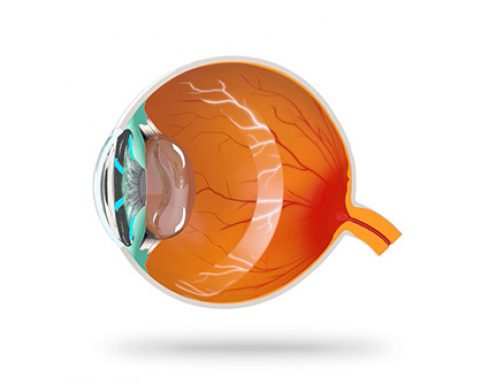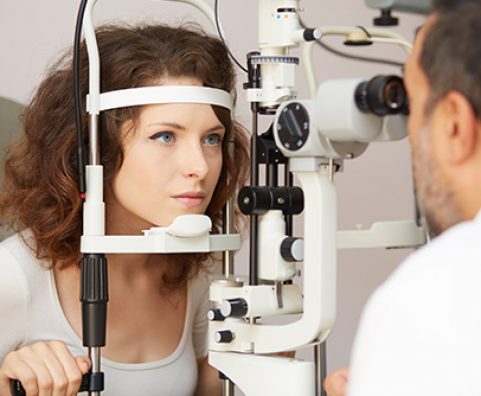Glaucoma
Once pictured
GLAUCOMA
Glaucoma is one of the leading causes of vision loss in Europe. Approximately 2% of people over the age of 40 and around 8% over the age of 70 are affected. This eye disease develops gradually, making early detection difficult. Glaucoma first impairs peripheral vision and, by the time the patient notices a limited field of vision, it’s often too late.

Glaucoma: Definition
Glaucoma is a degenerative disease associated with gradual deterioration of vision, first affecting peripheral and then central vision. The cause is poor circulation of intraocular fluid, which increases pressure inside the eye. This in turn leads to retina damage and then a loss of neurons, with the optic nerve ultimately crushing entirely.
80% of all cases of glaucoma are open-angle glaucoma, which develops slowly over a period of approximately ten years and does not cause pain. Closed-angle glaucoma, on the other hand, is very painful and can quickly lead to blindness.
Glaucoma is a degenerative disease associated with gradual deterioration of vision, first affecting peripheral and then central vision. The cause is poor circulation of intraocular fluid, which increases pressure inside the eye. This in turn leads to retina damage and then a loss of neurons, with the optic nerve
ultimately crushing entirely.
80% of all cases of glaucoma are open-angle glaucoma, which develops slowly over a period of approximately ten years and does not cause pain. Closed-angle glaucoma, on the other hand, is very painful and can quickly lead to blindness.
Glaucoma: Causes and symptoms
The loss of peripheral vision is gradual and therefore difficult for patients to perceive. Depending on how advanced the visual impairment is, coloured circles of light may appear in their field of vision and their pupils may grow to unusual sizes.
Glaucoma is usually hereditary, in which case visual impairments can appear at a young age. But it can also be caused by ocular malformations or a severe blow to the eye. This visual impairment is increasingly diagnosed among people with high blood pressure, low blood pressure and diabetes.
The loss of peripheral vision is gradual and therefore difficult for patients to perceive. Depending on how advanced the visual impairment is, coloured circles of light may appear in their field of vision and their pupils may grow to unusual sizes.

Glaucoma is usually hereditary, in which case visual impairments can appear at a young age. But it can also be caused by ocular malformations or a severe blow to the eye. This visual impairment is increasingly diagnosed among people with high blood pressure, low blood pressure and diabetes.

Prevention and treatment
In the case of congenital glaucoma, it’s very important to undergo a medical examination as early as possible. The ophthalmologist can then prescribe a treatment protocol to prevent the disease from developing any further.
Generally speaking, everyone who’s approaching the age of 40 should have their eyes checked by an ophthalmologist, who can employ simple procedures to check the field of vision, the fundus and intraocular pressure.
In the case of open-angle glaucoma,
the doctor can prescribe a treatment to slow down progression of the disease. However, any sight that has already been lost cannot be restored. On the other hand, laser surgery is an option for closed-angle glaucoma: the ophthalmologist cuts a hole in the iris, which then regulates intraocular pressure. In this case, treatment represents a cure.
